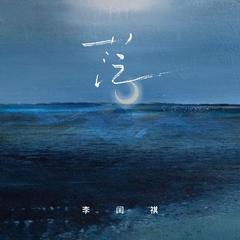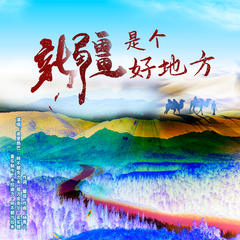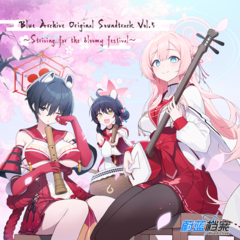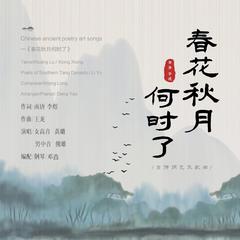Neil Young
除Bob Dylan之外,尼尔.扬是公认的最有成就的歌手兼词曲作家。尼尔.扬出生在加拿大多伦多市。童年时代,扬就学会了演奏尤克里里琴(一种吉他型四弦弹拨乐器)。少年时代,他又学会了演奏吉他。他曾经在多支乐队中担任乐手。后来他和他的朋友布鲁斯.帕尔默一起前往洛杉矶,寻求发展。同另外几位音乐家于1966年建立起一支名为法罗.斯普林菲尔德的乐队。其中的成员包括:斯蒂芬.斯蒂尔斯,里奇.弗瑞和德鲁.马叮斯普林菲尔德乐队于1968年解散,从此以后,扬开始了独唱音乐家的生涯,并且在1969年1月完成了自己的首张个人专辑《尼尔.扬》。这张专辑中的音乐表现出一种平静的心绪。管乐器和弦乐是他的只要伴奏乐器,虽然这张专辑并未引起人们太多的注意,但是其中的一首名为《孤独者》的歌曲却永远留在人们的记忆之中。在四个月之后,尼尔.扬录制了自己第二张专辑,风格与第一张专辑相比,有天壤之别,其中带有浓重的硬摇滚的味道。伴奏乐队换成了一支由三件电声乐器构成的“疯马”乐队。这张名为《大家都知道只是无人知道的地方》取得了巨大的成功,使扬一夜成名。这张唱片很快就成了一张金唱片。1969年6月,扬加入了著名的“克劳斯比,斯蒂尔斯和纳什”乐队。在此后的一年时间里,扬兼顾了个人演唱和乐队演出两个方面的事业,直到第二年夏天乐队解散为止。1970年8月,扬发行了第三张个人专辑《淘金潮之后》。这张专辑进入了排行榜十佳专辑的行列,其中的单曲还进入了40佳单曲的名单。这就是那首《只有爱才能伤透我的心》。 扬虽然已经取得了一些成就,但距离商业成功的顶峰还有一段距离,直到1972年初,他发行了那张发行量超过300万张的成功的专辑之后,才真正成为了美国摇滚乐坛的一位巨星。专辑《季节》作为一张成功的专辑曾经占据过排行榜冠军的位置。其中的一曲《金子般的心》的单曲唱片成为了排行榜的冠军,同时也成为了一张金唱片。在音乐事业取得巨大成功之际,尼尔.扬并未继续拓展自己的事业,相反,他转而从事纪录片的拍摄工作,在1972年的大部分时间里,他把自己主要的精力都投入到纪录片《往昔之旅》的拍摄中,还为这部纪录片创作并演奏了音乐。1973年初,他举行了个人巡回音乐会。此时,他从前的伙伴“疯马”乐队的吉他手丹尼.惠顿因吸毒过量而丧生。这次巡回演唱会之后,他推出了现场版本的专辑《时间消逝》。在此之后,扬完成了一张未发行的专辑《今夜的夜色》,其中有他的两位朋友的演奏。一位是惠顿,另外一位是乐队巡回演出的管理员布鲁斯.贝里,此人也因吸毒而丧生。 相隔18个月,尼尔.扬推出了第一张完全在录音棚中完成的专辑《在海滩》,时间是1974年夏天。这张专辑的音乐基本没有采用电声乐器,与前一张专辑的音乐形成了鲜明的对比。其中的音乐思想表达了一种恐惧的情感。1975年夏,尼尔.扬终于推出了专辑《今夜的夜色》。同年秋,他又推出了硬摇滚风格的专辑《祖马》。1976年春,扬同斯蒂芬.斯蒂尔斯一道巡回演出,并且推出了一张二重唱专辑《祝你跑得远》。扬的下一张个人专辑是1977年的《美利坚的星条旗》,这张专辑中的歌曲都是他三年前在录音室中完成的。同年秋天,扬发行了一张包括了三张唱片(后来被的版本是两张CD)的专辑《十年》。这张专辑无疑是他的十年音乐成就的回顾。1978年,扬录制了一张乡村-民谣风格的专辑《来一次》。这是自《收获》之后民谣风格最浓的一张专辑,而且也是在《收获》之后第一张十佳专辑。1979年,扬再次和“疯马”乐队一道举办巡回演出。代表性的单曲是那首《锈蚀从来不会停止》。后来,扬还曾经发行过一张与这首单曲同名的专辑。进入80年代之后,由于他的商业成功的地位不断下降,扬把自己的主要精力用于转变其单一的音乐风格。在专辑《过渡》中,从早期摇滚乐风格的《大家的摇滚》到乡村风格的《老办法》,扬显露出音乐风格多样化的倾向。而专辑《这张便条是给你的》则带有浓厚的节奏布鲁斯风格。1989年,尼尔.扬重新回到了他最熟悉的民歌和摇滚风格,专辑《自由》就是这种回归最好的例证。这张专辑不但赢得了评论家的一片喝彩,而且成为了尼尔.扬十年以来的首张金唱片。其后的一张带有浓厚的硬摇滚风格的专辑《精疲力尽的荣誉》得到的称赞比起前一张专辑有过之而无不及。这张专辑为尼尔.扬赢得了1990年由《乡村之声》杂志评选的最佳专辑奖。1991年,尼尔.扬推出了现场版本的专辑《焊接》以及一张器乐吉他演奏专辑《环。同时他开始了新一套回顾性专辑《十年》的录制工作。1992年,随着摇滚乐的进一步发展,尼尔.扬再一次成为了受人关注的焦点人物。他被许多评论家称之为“垃圾摇滚的教父”,成为了众多新近崛起的乐队所推崇的摇滚乐大师。许多90年代的超级摇滚乐队,诸如“珍珠酱”乐队和“鹰鲨”乐队都把他的影响看作是成长中重要的一环。很自然地,随着摇滚乐逐渐告别80年代的强劲节奏,尼尔.扬也从硬摇滚中走了出来,重新将更为抒情、更为安静的风格作为自己主要的选择。专辑《收获月亮》是他具有划时代意义的超级专辑《收获》的序篇,显然在90年代中期推出,相当顺应时事。1993年,伴随着所谓的“不插电”潮流,尼尔.扬也推出了自己“不插电”专辑。他乡村摇滚风格显然与这种只依靠乐器本身的声音而完全不依靠电声的伴奏相当吻合。因此,在这种潮流中扬重新焕发了艺术的青春。 在此之后,扬重新投入到新的专辑的录制中,他的合作伙伴正是那支同他合作多年的“疯马”乐队。1994年夏,扬录制完成了专辑《同天使在一起》。次年夏天,他和“珍珠酱”乐队一道录制了专辑《镜厅》。 After Neil Young left the Californian folk-rock band Buffalo Springfield in 1968, he slowly established himself as one of the most influential and idiosyncratic singer/songwriters of his generation. Young's body of work ranks second only to Bob Dylan in terms of depth, and he was able to sustain his critical reputation, as well as record sales, for a longer period of time than Dylan, partially because of his willfully perverse work ethic. From the beginning of his solo career in the late '60s until the late '90s, he never stopped writing, recording, and performing; his official catalog only represented a portion of his work, since he kept countless tapes of unreleased songs in his vaults. Just as importantly, Young continually explored new musical territory, from rockabilly and the blues to electronic music. But these stylistic exercises only gained depth when compared to his two primary styles: gentle folk and country-rock, and crushingly loud electric guitar rock, which he frequently recorded with the Californian garage band Crazy Horse. Throughout his career, Young alternated between these two extremes, and both proved equally influential; there were just as many singer/songwriters as there were grunge and country-rock bands claiming to be influenced by Neil Young. Despite his enormous catalog and influence, Young continued to move forward, writing new songs and exploring new music. That restless spirit ensured that he was one of the few rock veterans as vital in his old age as he was in his youth. Born in Toronto, Canada, Neil Young moved to Winnipeg with his mother following her divorce from his sports-journalist father. Young began playing music in high school. Not only did he play in garage rock outfits like the Esquires, but he also played in local folk clubs and coffeehouses, where he eventually met Joni Mitchell and Stephen Stills. During the mid-'60s, he returned to Toronto, where he played as a solo folk act. By 1966, he joined the Mynah Birds, which also featured bassist Bruce Palmer and Rick James. The group recorded an album's worth of material for Motown, none of which was released at the time. Frustrated by his lack of success, Young moved to Los Angeles in his Pontiac hearse, taking Palmer along as support. Shortly after they arrived in L.A., they happened to meet Stills, and they formed Buffalo Springfield, who quickly became one of the leaders of the Californian folk-rock scene. Despite the success of Buffalo Springfield, the group was plagued with tension, and Young quit the band several times before finally leaving to become a solo artist in May of 1968. Hiring Elliot Roberts as his manager, Young signed with Reprise Records and released his eponymous debut album in early 1969. By the time the album was released, he had begun playing with a local band called the Rockets, which featured guitarist Danny Whitten, bassist Billy Talbot, and drummer Ralph Molina. Young renamed the group Crazy Horse and had them support him on his second album, Everybody Knows This Is Nowhere, which was recorded in just two weeks. Featuring such Young staples as "Cinnamon Girl" and "Down by the River," the album went gold. Following the completion of the record, he began jamming with Crosby, Stills & Nash, eventually joining the group for their spring 1970 album, Déjà Vu. Although he was now part of Crosby, Stills & Nash, Young continued to record as a solo artist, releasing After the Gold Rush in August, 1970. After the Gold Rush, with its accompanying single "Only Love Can Break Your Heart," established Young as a solo star, and fame only increased through his association with CSNY. Although Crosby, Stills, Nash & Young were a very successful act, they were also volatile, and they had split by the spring 1971 release of the live Four Way Street. The following year, Young had his first number one album with the mellow country-rock of Harvest, which also featured his first (and only) number one single, "Heart of Gold." Instead of embracing his success, he spurned it, following it with the noisy, bleak live film Journey Through the Past. Both the movie and the soundtrack received terrible reviews, as did the live album Time Fades Away, a record recorded with the Stray Gators that was released in 1973. Both Journey Through the Past and Time Fades Away signaled that Young was entering a dark period in his life, but they only scratched the surface of his anguish. Inspired by the overdose deaths of Danny Whitten in 1972 and his roadie Bruce Berry the following year, Young wrote and recorded the bleak, druggy Tonight's the Night late in 1973, but declined to release it at the time. Instead, he released On the Beach, which was nearly as harrowing, in 1974; Tonight's the Night finally appeared in the spring of 1975. By the time of its release, Young had recovered, as indicated by the record's hard-rocking follow-up, Zuma, an album recorded with Crazy Horse and released later that year. Young's focus began to wander in 1976, as he recorded the duet album Long May You Run with Stephen Stills and then abandoned his partner midway through the supporting tour. The following year he recorded the country-rock-oriented American Stars 'n Bars, which featured vocals by Nicolette Larson, who was also prominent on 1978's Comes a Time. Prior to the release of Comes a Time, Young scrapped the country-rock album Homegrown and assembled the triple-album retrospective Decade. At the end of 1978, he embarked on an arena tour called Rust Never Sleeps, which was designed as a showcase for new songs. Half of the concert featured Young solo, the other half featured him with Crazy Horse. That was the pattern that Rust Never Sleeps, released in the summer of 1979, followed. The record was hailed as a comeback, proving that Young was one of the few rock veterans who attacked punk rock head-on. That fall he released the double album Live Rust and the live movie Rust Never Sleeps. Rust Never Sleeps restored Young to his past glory, but he perversely decided to trash his goodwill in 1980 with Hawks & Doves, a collection of acoustic songs that bore the influence of conservative, right-wing politics. In 1981, Young released the heavy rock album Re*ac*tor, which received poor reviews. Following its release, he left Reprise for the fledgling Geffen Records, where he was promised lots of money and artistic freedom. Young decided to push his Geffen contract to the limit, releasing the electronic Trans in January 1983, where his voice was recorded through a computerized vocoder. The album and its accompanying, technology-dependent tour were received with bewildered, negative reviews. The rockabilly of Everybody's Rockin' (1983) was equally scorned, and Young soon settled into a cult audience for the mid-'80s. Over the course of the mid-'80s, Young released three albums that were all stylistic exercises. In 1985, he released the straight country Old Ways, which was followed by the new wave-tinged Landing on Water the following year. He returned to Crazy Horse for 1987's Life, but by that time, he and Geffen had grown sick of each other, and he returned to Reprise in 1988. His first album for Reprise was the bluesy, horn-driven This Note's for You, which was supported by an acclaimed video that satirized rock stars endorsing commercial products. At the end of the year, he recorded a reunion album with Crosby, Stills & Nash called American Dream, which was greeted with savagely negative reviews. American Dream didn't prepare any observer for the critical and commercial success of 1989's Freedom, which found Young following the half-acoustic/half-electric blueprint of Rust Never Sleeps to fine results. Around the time of its release, Young became a hip name to drop in indie rock circles, and he was the subject of a tribute record titled The Bridge in 1989. The following year, Young reunited with Crazy Horse for Ragged Glory, a loud, feedback-drenched album that received his strongest reviews since the '70s. For the supporting tour, Young hired the avant rock band Sonic Youth as his opening group, providing them with needed exposure while earning him hip credibility within alternative rock scenes. On the advice of Sonic Youth, Young added the noise collage EP Arc as a bonus to his 1991 live album, Weld. Weld and the Sonic Youth tour helped position Neil Young as an alternative and grunge rock forefather, but he decided to abandon loud music for its 1992 follow-up, Harvest Moon. An explicit sequel to his 1972 breakthrough, Harvest Moon became Young's biggest hit in years, and he supported the record with an appearance on MTV Unplugged, which was released the following year as an album. Also in 1993, Geffen released the rarities collection Lucky Thirteen. The following year, he released Sleeps with Angels, which was hailed as a masterpiece in some quarters. Following its release, Young began jamming with Pearl Jam, eventually recording an album with the Seattle band in early 1995. The resulting record, Mirror Ball, was released to positive reviews in the summer of 1995, but it wasn't the commercial blockbuster it was expected to be; due to legal reasons, Pearl Jam's name was not allowed to be featured on the cover. In the summer of 1996, he reunited with Crazy Horse for Broken Arrow and supported it with a brief tour. That tour was documented in Jim Jarmusch's 1997 film The Year of the Horse, which was accompanied by a double-disc live album. In 1999, Young reunited with Crosby, Stills & Nash for the first time in a decade, supporting their Looking Forward LP with the supergroup's first tour in a quarter century. A new solo effort, Silver & Gold, followed in the spring of 2000. In recognition of his 2000 summer tour, Young released the live album Road Rock, Vol. 1 the following fall, showcasing a two-night account of Young's performance at the Red Rocks Amphitheater in Morrison, CO, in September 2000. A DVD version titled Red Rocks Live was issued that December, including 12 tracks initially unavailable on Road Rock, Vol. 1. His next studio project was his most ambitious yet, a concept album about small-town life titled Greendale that he also mounted as a live dramatic tour and indie film. In early 2005, Young was diagnosed with a potentially deadly brain aneurysm. Undergoing treatment didn't slow him down, however, as he continued to write and record his next project. The acoustically based Prairie Wind appeared in the fall, with the concert film Heart of Gold, based around the album and directed by Jonathan Demme, released the following year. 2006 also saw the release of the controversial CD/DVD Living with War, a collection of protest songs against the war in Iraq that featured titles such as "Let's Impeach the President," "Shock and Awe," and "Lookin' for a Leader." Restless, prolific, and increasingly self-referential, Young issued Chrome Dreams II late in 2007.

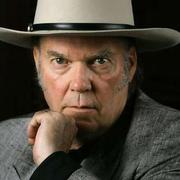
 Helpless(Live) - Neil Young
Helpless(Live) - Neil Young

